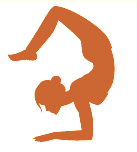I’m experiencing the benefits yoga every day. The practice helps me to expand my consciousness. It helps me stay grounded and strong. Here is a list of my ten favorite quotes of the great masters.
#1: “Yoga is the practice of undisturbed calmness of mind. It is attained by cultivating friendliness toward the happy, compassion for the unhappy, delight in the virtuous, and indifference toward the wicked. ” ~ Patanjali
#2: “When the breath wanders the mind also is unsteady. But when the breath is calmed the mind too will be still, and the yogi achieves a healthy and long life. Therefore, one should learn to understand the quality of the breath.” ~ Hatha Yoga Pradipika
#3: “Yoga is not possible, for the one who eats too much, or who does not eat at all; who sleeps too much, or who keeps awake. ” ~ Krishna in Bhagavad Gita
4#: ”The rhythm of the body, the melody of the mind & the harmony of the soul create the symphony of life.” ~ B.K.S. Iyengar
5#: “Yoga is not a religion. It is a science, science of well-being, science of youthfulness, science of integrating body, mind and soul. Yoga is more about the exploration and discovery of the subtle energies of life.” ~ Amit Ray
6#: “Inhale, and God approaches you. Hold the inhalation, and God remains with you. Exhale, and you approach God. Hold the exhalation, and surrender to God.” ~ Krishnamacharya
7#: “Yoga is essentially a practice for your soul, working through the medium of your body.” ~Tara Fraser
8#: “Yoga is the perfect opportunity to be curious about who you are.” – Jason Crandell
9# “Under the bright sun, many of us are gathered together with different languages, different styles of dress, even different faiths. However, all of us are the same in being humans, and we all uniquely have the thought of “I,” and we´re all the same in wanting happines.” ~ Dalai Lama
10#: “Be a lamp unto yourself. Work out your liberation with diligence.” ~ Buddha

 Follow
Follow